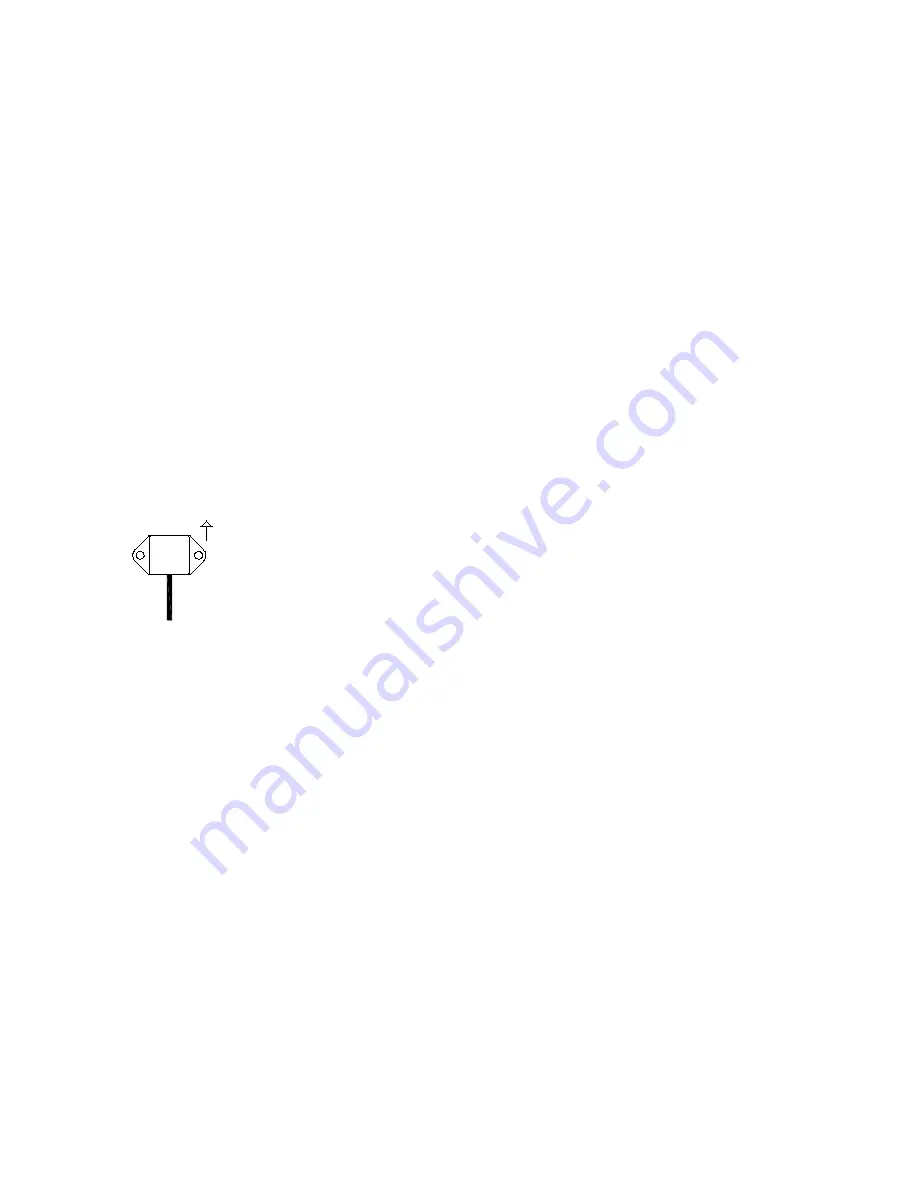
MAN# 650098-B
will be reduced. This can be connected to a toggle switch to reduce the brightness at night. To have
the system at full brightness all of the time, leave the blue wire disconnected.
TEMPERATURE SENSOR CONNECTION
The sender must be Dakota Digital part SEN-15-1.
Sending units from other manufacturers will cause incorrect
readings. The red wire on the sensor connects to the gray wire on the clock. The black wire connects to the black wire or
the case of the clock.
The sensor will measure the temperature where its probe is located. The sensor has a 12’ two wire cable to
connect it to the gauge. This cable can be shortened or additional wire can be added. If additional wire is added, the
added wire pair should be twisted and polarity of the wires should be carefully noted. If the probe temperature is below -
39
°
the display will show “—“. If a sender is not connected properly, the display will show
“ – “. If the SND terminal is shorted to ground, the display will show “---”.
For outside temperature sensing, the best location will be near the front headlight or another location at the front of
the cycle where it will have good air flow while you are moving. Do not mount the sensor too close to the engine or
exhaust. Doing so will cause the temperature reading to be much higher than the actual outside temperature. The air
temperature gauge will operate and read correctly between the temperature range of -39 - 255
°
F (-39 - 125
°
C).
COMPASS SENSOR CONNECTION
The 3-pin connector from the sensor mates to the 3-pin connector from the display harness. The sensor needs to
be mounted with the two mounting tabs down and the cable coming out towards the rear of the cycle. It should be
mounted as flat as possible to make sure it can provide accurate readings. Do not mount it next to any high current wires
since they may cause incorrect readings.
The compass will display one or two letters to indicate the current direction the sensor is pointed. Large steel
objects such as bridges can cause incorrect headings. If the compass detects a disturbance it will freeze the current
heading and highlight the display. If the compass display is always highlighted, even in open areas, then the compass will
need to be calibrated. This is described in the “Setting the time and calibrating gauge” section.
front
cable
Setting the time and calibrating gauge:
The switch on the front of the lens is used for adjusting the time, setting up the temperature unit, setting up the
compass, and making calibration changes. At any time during the setup you can turn the key off and all of the changes
you made will be saved. The next time the key is turned on the display will light up normally.
1. To enter the set mode, hold the switch in while turning the key on. The gauge will display the time and day of
week with the minutes selected.
2. Press and release the switch to increment the minutes. Press and hold the switch in to move to the hours.
3. While the hours are selected, press and release the switch to increment it. Press and hold the switch to move to
the time adjustment.
4. The display will now show a number from -7 to +7 and “cal”. This is the current time adjustment setting. Pressing
and releasing the switch will increment the value. A setting of zero does no adjustment, +2 adds two seconds per
day (slows the clock down), -3 subtracts three seconds per day (speeds the clock up), and so forth. When the
desired adjustment setting is displayed, press and hold the switch. The display will now change to the true north
adjustment.
5. The display will show the current heading offset in degrees from -31 to +31 and “N cal”. This is used to
compensate for the difference between magnetic north and true north as well as for errors in the positioning of the
compass sensor. This offset will vary for different parts of the country. Refer to the map on the following page for
the recommended setting for your area. Press and release the switch to change the offset, then press and hold
the switch to save the setting.
6. The display will show the current temperature unit, either F or C. Press and release the switch to change the
setting, then press and hold the switch to move to the compass setup.
7. The final setup display will allow calibration of the compass to compensate for the magnetic field created by the
cycle it is installed into. The display will initially show “- -“. To exit the setup routine, press and hold the switch with
the dashes displayed. Press and release the switch to change to the “CAL” selection. To begin the compass
calibration, press and hold the switch with “CAL” displayed. (make sure the engine is running before starting the
calibration).






















